India is known all over the world for its unmatched vibrancy, immense spirituality and a colorful culture. Each religion and culture is extremely distinct from each other with their own set of rules and following. Being a melting pot for numerous religions India celebrates each festivals and fairs with incredible vigor and enthusiasm. The purpose of these festivals varies from celebrating the changing of the seasons to celebrating good harvest and so much more. Over the years India has not only emerged as a spiritual travel destination but also as one of the prime locations as top travel destination during fairs and festivals. India is known for its unique traditions and beliefs and the entire continent comes to life during the time of festivals. The streets are lit brightly and the entire atmosphere is engulfed in an incomparable liveliness. There is a general shared enthusiasm among the locals and an elevated sense of oneness and kindness. Each state in India has its own set of festivals and fairs which celebrates the intricate cultural fabric of the subcontinent. Not only there is immense exuberance on the day of the festival but the marketplaces start teeming with Locals days before the festival. India is a land which exudes an incredible amount of deep spirituality and devotion so visiting this place during any festival or fair will prove to be worth it.
1. Bhai Dooj:
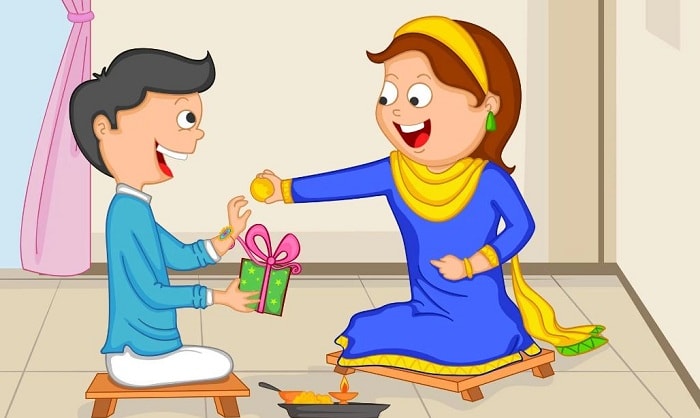
To celebrate festivals is always an important tradition of Hindus. Form all the festivals Bhaiya-Dooj is one of the most awaited festival. The name if this festival has also an important sense; the meaning of Bhaiya is brother and Dooj meaning is a new moon after two days as this festival is celebrated after the two days of Diwali in kartik month of Hindus calendar. Bhai Dooj festival is also spelt as Bhaiya Dooj festival, Bhaiduj or Bhai Duj festival in India. This festival is celebrated among all the brothers and sisters. On this day Tika is applied by the sisters on their brother’s forehead and sisters offer their prayers asking for their brother’s long life and in lieu of it brothers offer their blessings to their sisters with a lifetime promise to protect them from all adversity in their life.
After the energetic celebration of Diwali, the lights festival and fire-crackers, sisters of all over India get ready for Bhai Dooj. On this day sisters do the ceremony by putting a sacred Tilak or a vermilion mark on the forehead of their brothers with love and perform an aarti of by showing them the light of the holy flame as a mark of their love and protection from evils. On this occasion sisters are gifted goodies and blessings by their brothers. Bhai Dooj is celebrated each year usually on the fifth and last day of Diwali that falls on a new moon night.
The myths and legends of this festival say that Bhai Dooj is also called ‘Yama Dwiteeya’ as it’s said that on this day, Yamaraj – the Lord of Death and the keeper of Hell, went to visit his sister Yami, who put the propitious mark on his forehead and prayed for his welfare. So, it is believed that on this day anyone who gets tilak from his sister will not be thrown into hell. Hindus celebrate this beautiful relationship twice in a year; in form of Raksha Bandhan and Bhai Dooj.
Generally, on this day brothers do not go to their sisters’ place rather sisters come to their birthplace that is their mother’s home for Tilak ceremony. After performing the ceremony, brothers give gifts to their sisters. Generally, the girl of the house is treated with numerous presents like clothes, utensils, and sweets or Mithai on this day and whatever they demand to have.
2. Christmas Day:
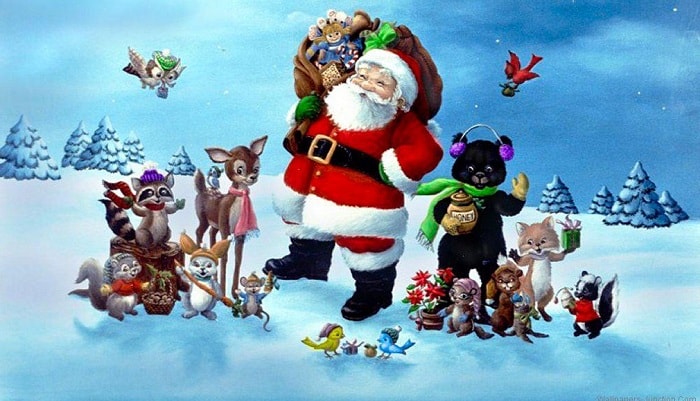
Christian communities in India celebrate Christmas with splendor, joviality and affection. The celebration of this world-famous festival ‘Christmas’ begin on the eve of Christmas on every 24th of December and goes on till New Year’s Day (1st of January). Christians crosswise the country marks the birthday of Lord Jesus Christ on Christmas Day by participating in their specially organised masses that often take place in churches. The celebrations of Christmas are marked by songs, cakes, candles, and balloon and with other decorative belongings and of course with beautiful Christmas Tree. In numerous parts of India, especially in metropolitan cities like Mumbai, Delhi, Bangalore and Chennai, Christmas Festival has unspoken worldly overtones and is celebrated with great pomp and show by the people of every religions and communities, not just in India but also all across the globe.
The day Christmas is popularly known as ‘Bada Din’ (Big Day) in Hindi is a national holiday in India. Though, it is Christians’ festival but People from all religions join their Christian friends to celebrate and to make the most of the blissful celebrations. In Christian families, preparations for Christmas usually begin at least one month before Christmas.
Before the arrival of Christmas people get their homes painted and get indulged in spring cleaning of the house to give it a fresh, innovative and good look. Ladies start preparing for their traditional Christmas cake which is eagerly awaited not just by the entire family members but by the neighbours and friends also. Excited shopping activity takes place as everyone buys new clothes for the festival. Christmas Gifts are purchased for friends, relatives and kids in the family. Christmas is the most significant festival for every Christian and it is the time also for family gatherings to spend time with lots of fun and enjoyment. People who live in different cities due to jobs or higher education return back to their respective homes for celebrating Christmas with their near and dear ones. On this day people enjoy a lot and the celebration goes on whole night.
3. Desert Festival:
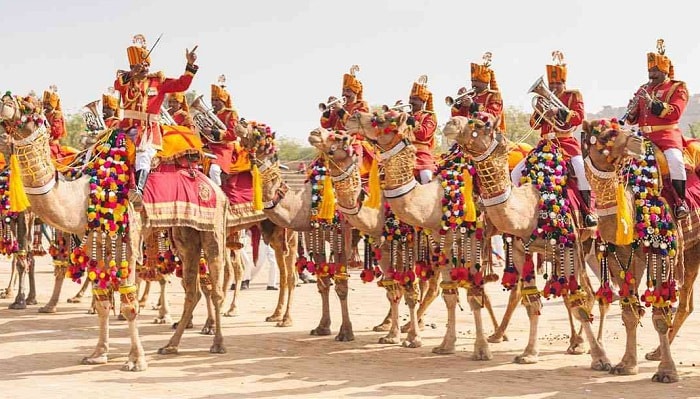
Along with the stunning and immense charm, Jaisalmer is well-known for hosting annual desert festival which is held in the month of January and February. The multicolored event is held every year at Jaisalmer desert fair. This festival showcases the plethora of traditional performing arts and crafts of Rajasthan. The enchantingly rhythmic tunes and soothing traditional music of the folk musicians teamed up with impressive folk dance performances by well – known artists creates a mesmerizing experience for the viewers. The event is planned on the famous golden sand dunes at Sam near Jaisalmer. Multi-colored craft bazaars set up for the occasion is an added charm of the festival.
During the multi-colored Jaisalmer desert festival, several exciting competitions are held such as camel races, the turban-tying contest, Mr. Desert contest and a contest for the longest moustache add more colour and appeal to this cultural extravaganza. Multi-colours bedecked camels take you to the beautiful sand dunes in the close by regions. During the festival visitors can also visit the well-known mansions and forts of Jaisalmer, for instance, Jaisalmer Fort, Patwon – ki – Haveli and Gadsisar Lake among many more can be a satisfying experience for the visitors.
You are welcomed in this colorful and vibrant Rajasthan state of India and get the true experience of Colourful Rajasthan in its fairs and festivals on your mesmerizing Rajasthan Festival Tour. Captivating Rajasthan is an experienced and believed tour operator offering excellent services to its customers for several years now.
4. Elephant Festival:
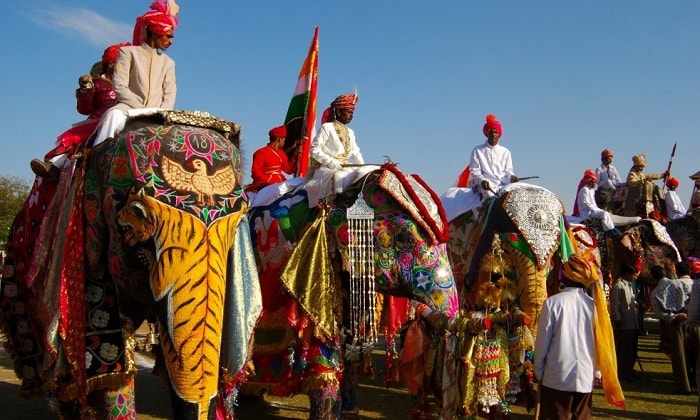
The elephant festival is counted among one of the most popular festivals of the past Raja Maharajas celebrated in the month of March on the eve of Holy (the festival of colours). During this festival, the whole city Jaipur, the capital of Rajasthan looks in a multicolored association of elephants meant to represent the royalty of bygone era of Rajasthan.
In the elephant festival, the royal procession takes place where the Maharaja sits on a gold and silver ‘howdah’ which is placed on backwards of one of the most favorite elephant bejewelled with unique ornaments and gold embroidered Jhalars which are accompanied with the royal elephant. During this festival the visitors, as well as jury of authorities, get hold of an opportunity to pick and choose offer a shield for “Best adorned Elephant”. Elephant polo game, tug-of-war ‘Gaj Shringar’ exhibition are being organized to exhibit everything affixed to elephant ornaments.
During the festival of elephant, elephants, dancers, musicians, visitors and spectators reach to the Chaugan or the Polo Ground in Jaipur. The festival originates with the procession of elephants, horses, chariots, canons, camels and palanquins followed by performances of the folk dancers. The atmosphere is made lively with the sound of the bankiya or proclaim.
Most of the participants in the festival of elephant in Jaipur are the female elephants. The mahouts take utmost care and great fervour in beautification and grooming of the elephants, since the best-decorated elephants are rewarded. The elephants are applied paint on their foreheads, trunks, and feet with designs of flowers and adorned with various colorful ornaments and jewelry which pans from the tusk to tail.
The elephant has always been the top choice for Imperial Mount among the kings and Maharajas members of the royal dynasty, nobles and dignitaries mounting it. Rajasthan Tourism has re-energized the age-old tradition of significance of elephants by consisting of the elephant festival in the list of the cultural calendar.
5. Guru Purnima:
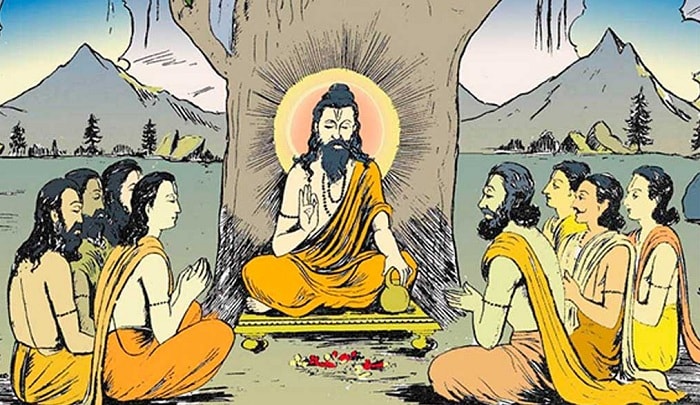
The festival of Guru Purnima is celebrated in honor of the Guru. The day of full moon, Purnima, in the month of Ashadh is conventionally celebrated as Guru Purnima by Hindus. This festival is also known as Vyas Purnima; Guru Purnima is celebrated in remembrance and veneration to sage Ved. He is the original Guru of the Hindu Dharma, who confidentially wrote the Vedas, the eighteen Puranas and the Mahabharat. On this day, the Guru is offered (Puja) by the disciples.
The festival of Guru Purnima is also known as Vyasa Pumima because Rishi Vyasa himself was a great Guru. Vyasa or Veda-Vyasa was son of Rishi Parashar and Satyavati, who is also known as Krishna Dwaipayna. Guru Poornima is a festival which is celebrated to return the debt we occupy to our gurus and to their teachings.
On this day, all religious and devotees worship Vyasa in honor of his heavenly celebrity and all believers perform worship (puja) of their respective devout preceptor or ‘Gurudevs. This day is of yawning significance to the farmers, for its messengers the setting in of the much-needed rains, as the arrival of cool showers escort in fresh life in the fields. It is a good time to begin your menstrual lessons. Usually, religious seekers begin to intensify their spiritual journey (sadhana) from this particular day onwards. The time (Chaturmas) “four months” begins from this day. In the past, itinerant religious teachers and their devotees used to settle down at a place to learn and discourse on the Brahma Sutras collected by Vyasa, and engage themselves in Vedantic discussions.
On the Guru Poornima day, usually people take instigation into religious life from some confessor or gain some information for some rule and fast or vigil. These preceptors cannot assert the status of the guru as defined in the sloka, (Guru Brahma Guru Vishnu Guru Devo Maheswara Guru Sakshath Para Brahma Thasmai Shri Gurave Namaha). On these days the devotees worship and pray to God.
The Guru extolled that there is the sagacious that as transcending name and form and beyond the belongings of the three Gunas, he is neither enthusiastic nor indifferent. He is the Atma, having realized that the Atma is the one and only one. He makes you cast off the fright of birth and death; he causes to be you for the vision of the eternal absolute truth.
6. Independence Day (A Memorial Day in India):
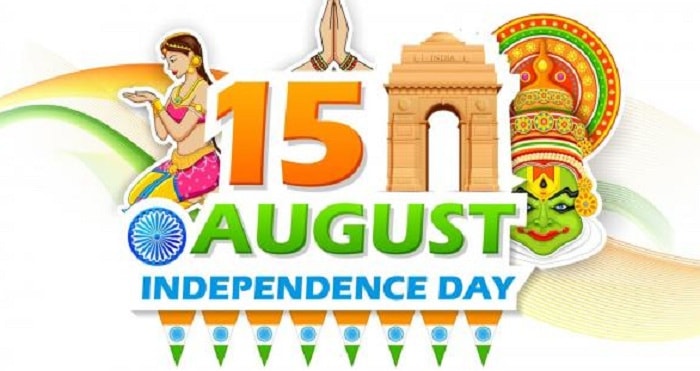
15th August is a memorial day for every Indian all over the globe. As it was the time, India got independence from the throttlehold of the mighty British. It was hoisted in the midnight on the Independence Day (on August 15 1947). Ever since then, the red-letter day is celebrated with pomp and fervour, across the length and breadth of India. Cultural programs and flag-hoisting ceremonies are the major affair of the day, while colorful kites fill the sky in the dusk, to epitomize freedom. Indian people pamper themselves in remembering the heroes of the freedom struggle and pay homage to them.
There is no academic work done in all the schools and colleges throughout India on special Independence Day (Red Letter Day), however every student and staff members are expected to be present in their respective educational or work institutions, to celebrate the 15th August. A sort of social thronging is managed in the educations institutions, where cultural programs are organized. Flag hoisting ceremony takes place within their respective arguments. At the same time as the flag is hoisted by the principal of the institution students sing the country’s national anthem and pay their respect to the flag and promise to uphold the independence of the country.
Both teachers and Students celebrate this day at their respective educational institutions, while people at home spend their day either by going for an outing or watching special programs on television. Primarily people tune in to Door Darshan early in the morning, to witness the live telecast of the country’s Prime Minister Speech which takes place at Red Fort in Delhi, as it is the foremost highlight of the Independence Day of India. The Prime Minister’s speech and patriotic songs and documentaries exhibiting extracts from the freedom struggle are aired on the national channels, at the same time as the private television channels make it a point that their viewers are pleased all through the day. That’s why they telecast cultural programs, movies be connected with independence, apart from the nationalistic songs that regenerate the hidden patriotism in people.
On Independence Day, shops are strictly shut throughout country, however one can still spot small shops like groceries and small stores coming back to business late in the dusk. The entire government offices remain on August 15. On Independence Day, Edwin Lutyens’s well-designed India Gate is the prime hub of attraction and a nice place to spend time in the evening of Independence Day, as the structure is charmingly lighted up. The sky in filled with kites of assorted shapes and colours. On Independence Day is national holiday all over the nationwide.
7. Kite Festival:
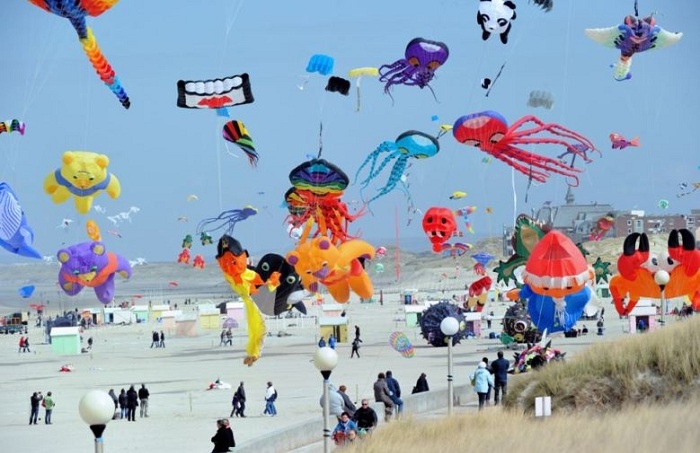
The kite festival is held in Ahmadabad and in Jodhpur on 14th January every year, it coincide with the Hindu festival Makar Sankranti that heralds a change of season which marks the change of direction of the sun into the northern hemisphere (a mark the end of chilly season). The kite festival in Ahmadabad and in Jodhpur is an international festival.
Worldwide kite flying festival in Jodhpur is held at the Polo Ground for three days. The sky seems downrightly surprising with kites in myriad hues, designs and shapes of the kites being flown in the air. The Air Force helicopters release multicolored kites from the sky while school children release colorful air balloons. The kite festival is divided into two forms as the Fighter Kite Competition and the Display Flying. The kite flyers also compete with each other by displaying their unique skills with the purpose of winning the Fighter Kite Competition while the other serenely fly the kite show evidence of their attractive kites for the Display Flying. The impressive trophies are awarded to the winners of both the categories and every participant is bestowed dinner at an exotic place.
The splendid ending of the international kite flying festival in Jodhpur is held in the extant lawns of the Umaid Bhawan Palace. The final stages of the Fighter Kite Competition and Display Flying are followed by a colorful prize distribution ceremony, thanks-giving ceremony and farewell dinner with the Maharaja of Jodhpur. The kite festival is attended and participated by numbers of people from throughout India and overseas.
The globally kite flying festival in Ahmadabad starts at the break of day and goes till the Sun sets without intervals or breaks. The keenness of the people is worth noting as they compete with each other in kite flying and shouting in exhilaration. The same excitement keeps on even after twilight and nightfall when illuminated box kites can be witnessed dotted in the night sky. They can also be found in a series of string on line and are commonly known as ‘Tukkals’. Local kite flying festivals are held in several cities of the country but international kite festival is held in Ahmadabad witnesses a large thronging of participants and observers from all over India and globe. If you crave to quench, you interest about the history of kites and kite flying and you can learn all this and much more at the Museum in Ahmadabad, which very succinctly yet colorfully outlined the history of kites and starting of kite flying.
8. Maha Shivratri:
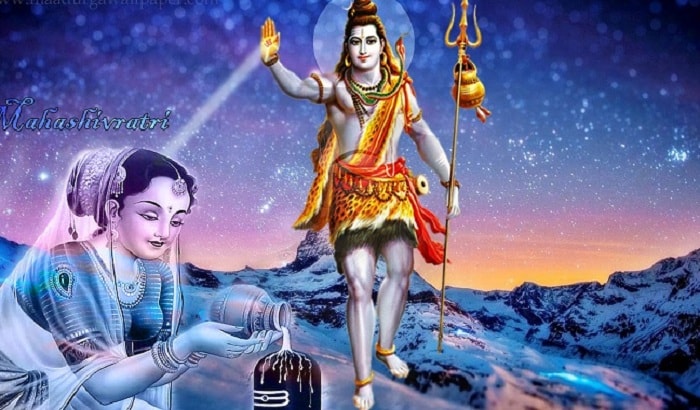
Mahashivratri celebrated all the way through the country, it is very popular festival in utter Pradesh. Mahashivratri is a festival of Hindus; it is celebrated every year on the 13th / 14th day in the Krishna Paksha of the month of Maagha or Phalgun in the Hindus calendar and according to English calendar it is celebrated in the month of February or March.
There a lot of interesting legends related to the festival of Mahashivratri. Many people believe that on this day lord shiv got married to Parvati Ji and some people trust that it was a favorable night of Shivratri that lord shiv performed the ‘tandave’ (the dance of the primal creation), conservation and destruction. There are many legends behind the celebration of festival of Mahashivratri which name is Samudra Manthan Story, a manifestation of Lord Shiva in the form of Jyotirlinga takes place on this day, Day of Reunion of Shiva & Parvati, Story of Chitra Bhanu, Story of Lubdhak, Spiritual Significance, etc.
On this festival, people worship to Lord of Shiva. In this day, people obey a strict fast in respect lord of Shiva. Many people keep fast on fruits and milk and some people don’t take even a drop of water. In the morning the devotees break their fast with partaking Prasad offered to the deity. On this day, devotees worship of lord on the auspicious day of Shivratri. In this auspicious day, married women pray to god for well being of their husband and unmarried women pray to god to get a good husband like Lord Shiva.
On the festival of Shivratri, devotees wake up early in the morning and take a ritual bath in river Ganga. After taking a bath and wearing clean new clothing followers go to nearest Shiva temple to give Retule bath to the Shiva lignum with milk, water, honey, etc. on festival of Shivratri, devotees worship to Shiva continues day and night. Priests perform Retule pooja of Shiva lingam by bathing with milk, honey, water, ghee, with admits the chanting of “OM NAMAH SHIVAYA”. In temple of Lord of Shiva, devotees ring of the temple bells and the whole night they vigil or Jagran where a lot of people spend the night singing the devotional songs in praise of Lord Shiva. In this way Shivratri celebrated in a big way.
9: Makar Sankranti:
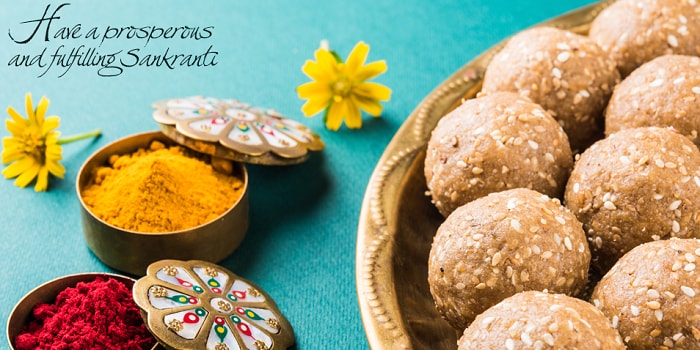
Makar Sankranti is the most auspicious festival of Hindus, celebrated in different parts of India. In keeping with the lunar calendar, when the sun shifts from Tropic of Cancer to the Tropic of Capricorn or in other words From Dakshinayana to Uttarayana during the sacred month of Poush in mid-January as per the Hindu calendar. The festival of Makar Sankranti falls on the fixed date that is 14th January every year.
It is said that any propitious and holy ritual can be consecrated in any Hindu family, this day elapsed. Methodically, this day marks the commencement of warm and long days as compared to the short nights. In other words, Sankranti marks the end of winter season and beginning of a recent crop.
Makar Sankranti is observed with great elaboration, along with distinct names and rituals in different parts of India. In northern and western states of India, the festival is celebrated as the Sankranti day with special fanaticism and zeal. The importance of 14th January (day of festival) has been signified in the ancient epics like Mahabharata also. Therefore, apart from socio-geographical importance, this day also holds a historical as well as religious importance. As, it is dedicated to Sun God and he is observed as the symbol divinity and wisdom, the festival also holds a never-ending meaning to it.
Makar Sankranti is known by various names and a variety of traditions are witnessed as one goes on exploring this festival in various states. In Uttar Pradesh, Sankranti is called ‘Khichiri’. Taking a dip at the confluence (Sangam) of Ganga, Yamuna and the mythical Saraswati, by meeting three rivers in Allahabad, this city called auspicious on this day.
In Punjabi, Makar Sankranti is commonly celebrated in the form of ‘Lohri’ and the next day it is celebrated as ‘Maghi’.
In Bundelkhand and Madhya Pradesh, Makar Sankranti is known as ‘Sukarat’ or ‘Sakarat’.
In Bengal, a huge fair is held at Ganga Sagar which is the point where the holy river Ganga proceeds into the sea.
In Andhra Pradesh, Makar Sankranti is celebrated as ‘Pedda Panduga’ as the meaning of big festival.
In Gujarat, kite flying is also associated with the festival of Makar Sankranti.
In Maharashtra, there is a custom to alter a sweet preparation called ’til-polis’ as a symbol of love.
10. Mewar Festival:
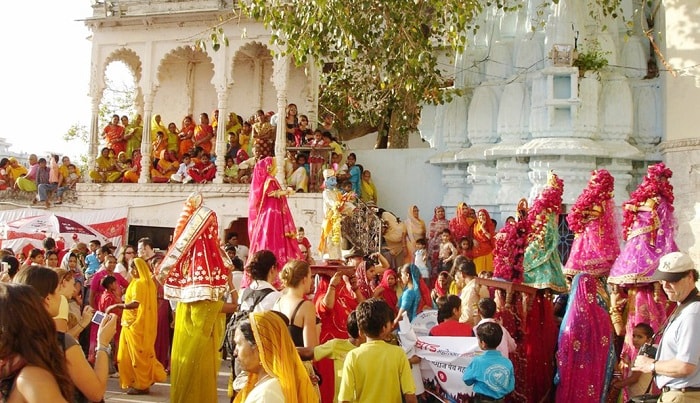
Udaipur is a developed city of Rajasthan in India. It has own airport that is connected to the famous cities of the country-Delhi, Mumbai, Jaipur etc. Udaipur has its very own railway station and the trains from major cities like Delhi, Agra, Jaipur, Ahmedabad etc. In addition it has a wide network of roads. Udaipur is also nicknamed the city of lakes. The city hosts of the Mewar Festival during March-April. The festival is the mark of the advent of spring.
Mewar festival is a visual feast with Rajasthani songs, dances, processions, devotional music and firework displays. The festival is celebrated in the romantic city of Udaipur and it happens together with Gangaur Festival. A procession of colourfully clothing women carrying the images of the goddess Gauri makes their way to the Lake Pichola. A strange procession of boats on the lake offers a fitting finale to it overwhelming high spirits, and the festival of Gangaur is extremely significant for the women folk of Rajasthan. It is a time for them to dress up in their best attires and participate in the festival.
The women throng to dress the images of Isar and Gangaur and then carry them in a ceremonial procession from beginning to end different parts of the city. The procession makes its way to the Gangaur Ghat at Lake Pichhola by covering some winding routes. Here, the images are then transferred to single individual boats amidst great singing and celebration.
On one occasion the religious segment of the festival is ended, it is time for cultural events where Rajasthani culture is represented by means of songs, dances and other programs. Mewar festival culminates with an imposing fireworks display. Like other fairs and festivals celebrated all over the state, there is a lot of activity, which keeps the participants in a pleasurable frame of mind, impatient to take pleasure in every moment.
11. Nagaur Festival:
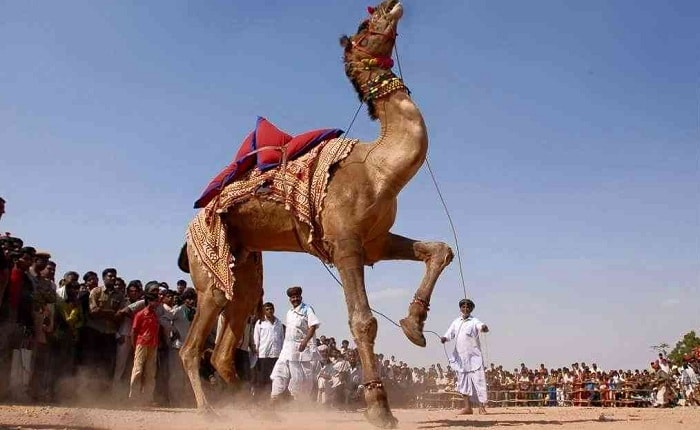
The Nagaur Festival is held every year in full winter season of Jan-Feb in the quaint Rajput town of Nagaur situated half way between Bikaner and Jodhpur. Nagaur Festival is mainly cattle fair and every year close to 75,000 camels, bullocks and horses are traded. In actual fact, the sheer volume of trading is amazing to the visitor who comes here the first time.
To affix spice to the celebrations, fun occasions, for instance, tug-of-war, camel and bullock races and cockfights here with captivating folk music Jodhpur affixes surreal magnetism to the whole festival. The first astonishing feature of Nagaur Festival is the vibrant ‘red-chilly bazaar’ that is exclusively set of connections at the festival premises. Red-chilly bazaar as it is well-known referred to in the local parlance is the largest in Asia.
The Nagaur fair is well-known throughout India for its trading of cows, bullocks, oxen, camels and horses, which takes place here. Their owners are seen wearing colourful turbans while flaunting their long moustaches. In addition wooden items, some of the popular fair items include items created out of iron, craft and leather accessories. A variety of games are organized during this four-day festival of Nagaur. By the evening, a festive ambiance is created by the folk musicians whose voices echoes across the silky desert sands.
The Nagaur fair is organized by the D.A.S (Department of Animal Husbandry) in association with the D.T.G.R (Department of Tourism, Government of Rajasthan). According to the latest statistical records, approximately 80,000 cattle owners take part in this largest festival of cattle with more than 2,10,000 cattle being traded.
12. Onam Festival:
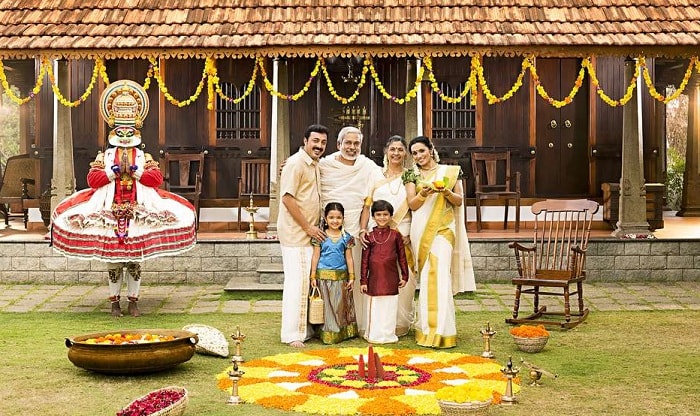
Onam is a ten-day festival of Kerala, celebrated as a harvest festival of Kerala with a great pomp and enthusiasm. The festival is an attraction for countless people outside and within the region. During the festival, all the activities are centered on worshiping, music, dance sports, boat races and delicious cuisines. Onam festival takes place during the Malayalam month of Chingam (ending of August and starting of September). This harvest festival of Kerala is celebrated the reward of nature after a hard working year. The joyous masking of the festival takes account of an elaborate procession of Trichur and entertaining boat races on ‘River Pampa’.
On the day of festival, numbers of women bedeck themselves with highly ornaments and wear precious sari to seem gorgeous and make multifarious and detailed designs of ‘Rangolies’ & ‘Pookalam’ with multicolour flowers in front of their abodes.
A long time ago, there was king named Mahabali who ruled Kerala for several years and looked after the welfare of the people that is why in the memory of king Mahabali, Onam festival is celebrated with great enthusiasm. The festival exhibits the heavenly rule of the king and the freedom, which the people took pleasure under his ruling. People believe that on the eve of Onam, the king returns back to Kerala where he pays a visit to his people.
On the occasion of Onam festival, people of Kerala clean and adorn their abodes & Homes and each member of the dynasty dresses up in new clothes in addition mouth-watering sweets and dishes are prepared and offered the banana leaves. ‘Pookalam’ a flower mat is visible in front of the each home and it is a symbol of welcoming king Mahabali. On the occasion of Onam, traditional rituals take place and the people celebrate the festival with a grand feast. ‘Payasam’ a sweet and tempting porridge is one the most preferred desert offered on the occasion of Onam.
On the eve of the Onam, ‘Vallam Kali’ or a great boat race is one the most attractive features. In this game hundred of men queue the boats to the beat of the drums and cymbals. Only one motivating thing to memo is that above each boat there is a red & silk umbrella and gold coins are hung from the umbrella as this event is exceptionally popular with assorted boats competing with each other with the intention of winning the race. The festival of Onam not only falls for Hindus but also falls for Christians and Muslim to celebrate in a big way in the memory of King Mahabali who ruled Kerala for a long time.
13. Republic Day:
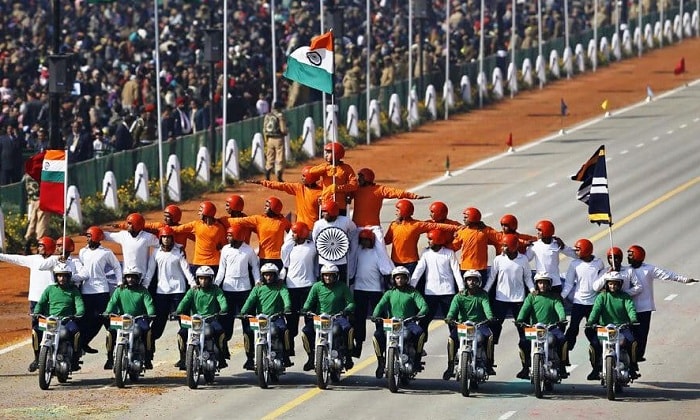
26 January is celebrated as republic day as 26th January 1950 is one of the most significant days in the history of India. On this day the constitution of India came into practice and India became a truly independent country as on this day India became a republican unit completely. The country finally comprehended the dream of Mahatma Gandhi and the numerous freedom fighters who, fought for the freedom of the country and while doing their job sacrificed their lives only for the Independence of their country. So, ever since the 26th of January was vindicated a national holiday and has been recognized and observed as the Republic Day of India. The Republic Day is India’s national festival.
The Republic Day is celebrated with great passion and eagerness all over the country, especially in the capital of India, New Delhi. In New Delhi, the celebrations begin with the Presidential to the nation. The starting of this occasion has always been a sombre reminder of the sacrifices of the martyrs who sacrificed their lives for the country in the freedom movement and the succeeding wars for the defense of independence of their country. Afterwards, the President moves forward to honor the medals of bravery and courage to the people from the armed forces for their exceptional courage in the field and also the civilians, who have illustrious themselves by their different acts of fearlessness in different situations.
Every year a grand procession (parade) is held in the capital, New Delhi from the Rajghat, along the Vijaypath to signify the importance of this occasion. The different troops of the army, the Navy and the Air force march past in all their robes and official decorations even the horses of the cavalry are nicely caparisoned to go with the occasion. School children from various institutions in the capital also do the same like army people. The nationalistic passion of the people on this day takes the whole country together even in indispensable diversity. Each and every part of the country is symbolized in occasion, which makes Republic Day one of the most popular of all the national holidays in India.
14. Summer Festival:
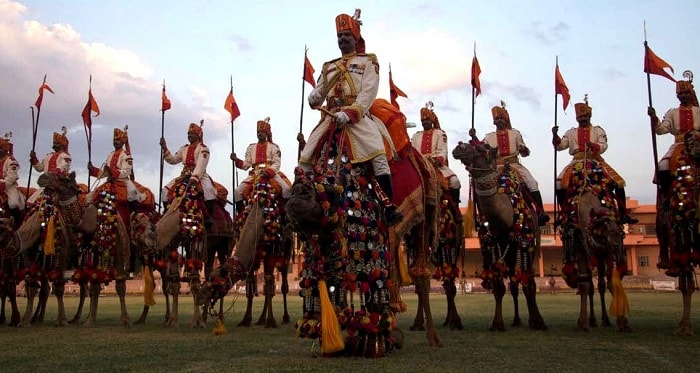
Welcome to Shimla Summer Festival! Shimla, the capital of Himachal Pradesh is the state of India . Himachal Pradesh, the northern part of the country tends to have cold weather. Most of its areas remain exceptionally cold during the year. But at the summer times, Shimla is the paradise on the earth. In the form of Shimla summer festival, it has always been marked as one of the most important attractions for the visitors in company with the hometown people. The festivities observe a vast association of men & women who congregate and celebrate advent of summer with pomp and mirth.
Shimla summer festival is organized by the SAO (Shimla Administration Officials), and it is celebrated with pomp and gaiety in the month of 2nd June to 6th June every year. The festival observes different cultural performances given by the regional artists in conjunction with folk performances by the various schools of Himachal Pradesh.
The foremost attractions of the summer festival of Shimla take account of Himachal Food Fest, Star Nights, Painting competition; Fashion Shows, Flower Shows, Baby Shows, Skating competition and also Himachal Film Festival will be organized. There will be ticket counters for watching during the summer festival at Shimla. The festival also arranges the Red Cross Fair, different games, photograph as well as poster exhibition. The Shimla summer festival is one of the foremost festivals of Shimla, projects the immensely rich traditions and exuberant cultures in the breathtakingly picturesque state of Himachal Pradesh. Shimla imagines the color of celebration during the month of summer.
Shimla summer festival gives a picture of the rich tradition of Himachal Pradesh and offers with all the required delicacies for the worldwide visitors to come and enjoy in the cold and tranquil ambiance of the Himachal Hills.
15. Vasant Panchami (Saraswati Puja):
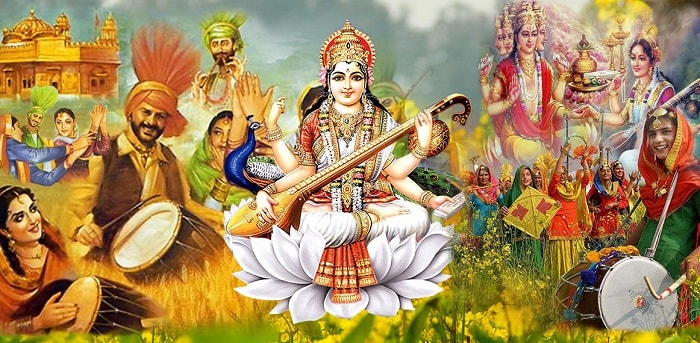
Vasant Panchami is regarded the most famous festival for the students for the purpose of getting more knowledge because Vasant Panchami is dedicated to Saraswati, the Goddess of knowledge. In relation to the Hindu mythology, the goddess is symbolic of constant flow for knowledge and wisdom. This festival is also believed as the birthday of Goddess Saraswati. The spring festival of Vasant Panchami is especially celebrated in the institutions of learning such as Saraswati is the goddess of knowledge; Students seek the blessings of Maa Saraswati. Spring is the season at what time crops are fully bloomed; therefore, people also celebrate this occasion by flying colorfully and fun kites.
Vasant Panchami marks the starting of the pleasant spring season which is celebrated with full joyfulness and elation amongst the Hindu people. The explanation of Vasant Panchami in Hindi language that is, ”Vasant” means ”spring” and ”Panchami” means the fifth day. In a nutshell, Vasant Panchami is celebrated as the fifth day of Spring Season. Vasant Panchami falls on the fifth day of Hindu calendar’s month Magh (in January-February). The festival of Vasant Panchmi is also known as Saraswati Puja.
Yellow colour is given some special and extra attention which dominates everywhere on this meticulous day. Yellow colour is allied with Goddess Saraswati as well as the mustard crop. Hindu people dress up in yellow colour and they make & purchase yellow colour sweets on the day of Saraswati Puja who is known to be the goddess of art, learning, knowledge and wisdom. On the festival day, People are also expected feed Brahmans with the feeling that their associates are accepting the food. Kite-flying has become the major part of this festival and people really enjoy this event. Vasant Panchami is a festival full of religious and spiritual, seasonal and social significance. It is celebrated by Hindus all over the world with fervour and new sense of optimism.
